
Cirkit Designer
Your all-in-one circuit design IDE
Home /
Component Documentation
How to Use WCS1700-Hall Effect Base Linear Current Sensor: Examples, Pinouts, and Specs
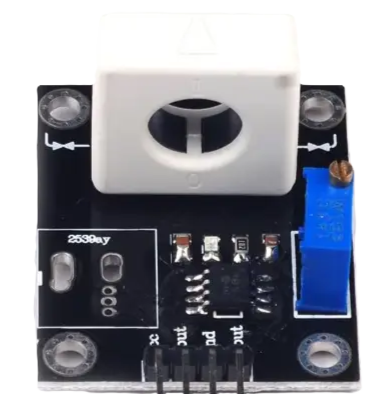
 Design with WCS1700-Hall Effect Base Linear Current Sensor in Cirkit Designer
Design with WCS1700-Hall Effect Base Linear Current Sensor in Cirkit DesignerIntroduction
The WCS1700 is a Hall Effect-based linear current sensor manufactured by Winson Semiconductor Corp. This sensor is designed to measure the current flow in a conductor and provide a linear output voltage proportional to the current. It is widely used in various applications, including power monitoring, battery management systems, motor control, and overcurrent protection.
Explore Projects Built with WCS1700-Hall Effect Base Linear Current Sensor
Wemos S2 Mini Controlled Smart Device with OLED Display, Thermal Printing, and RGB LED Strip
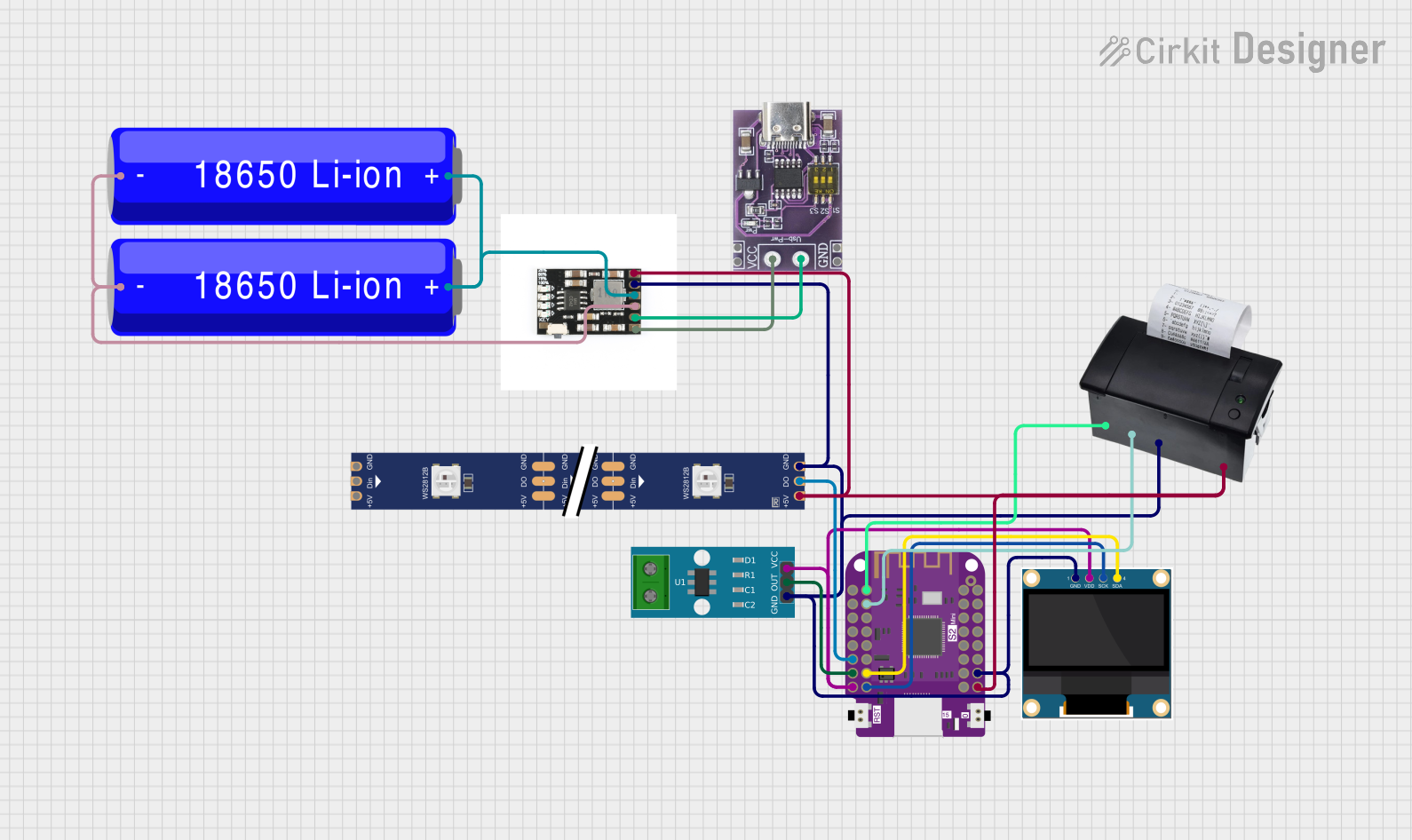
This circuit features a Wemos S2 Mini microcontroller that controls a WS2812 RGB LED strip and communicates with a 0.96" OLED display and a 58mm mini thermal printer. The ACS712 Current Sensor is interfaced with the microcontroller to monitor current, and power is managed by a CD42 BMS connected to two 18650 Li-ion batteries, with a USB-C PD Trigger Board for power delivery. The circuit is designed for visual output (LED strip, OLED display), printing capabilities, and current sensing, likely for a portable, battery-powered monitoring and display device.
 Open Project in Cirkit Designer
Open Project in Cirkit DesignerSmart Weighing System with ESP8266 and HX711 - Battery Powered and Wi-Fi Enabled
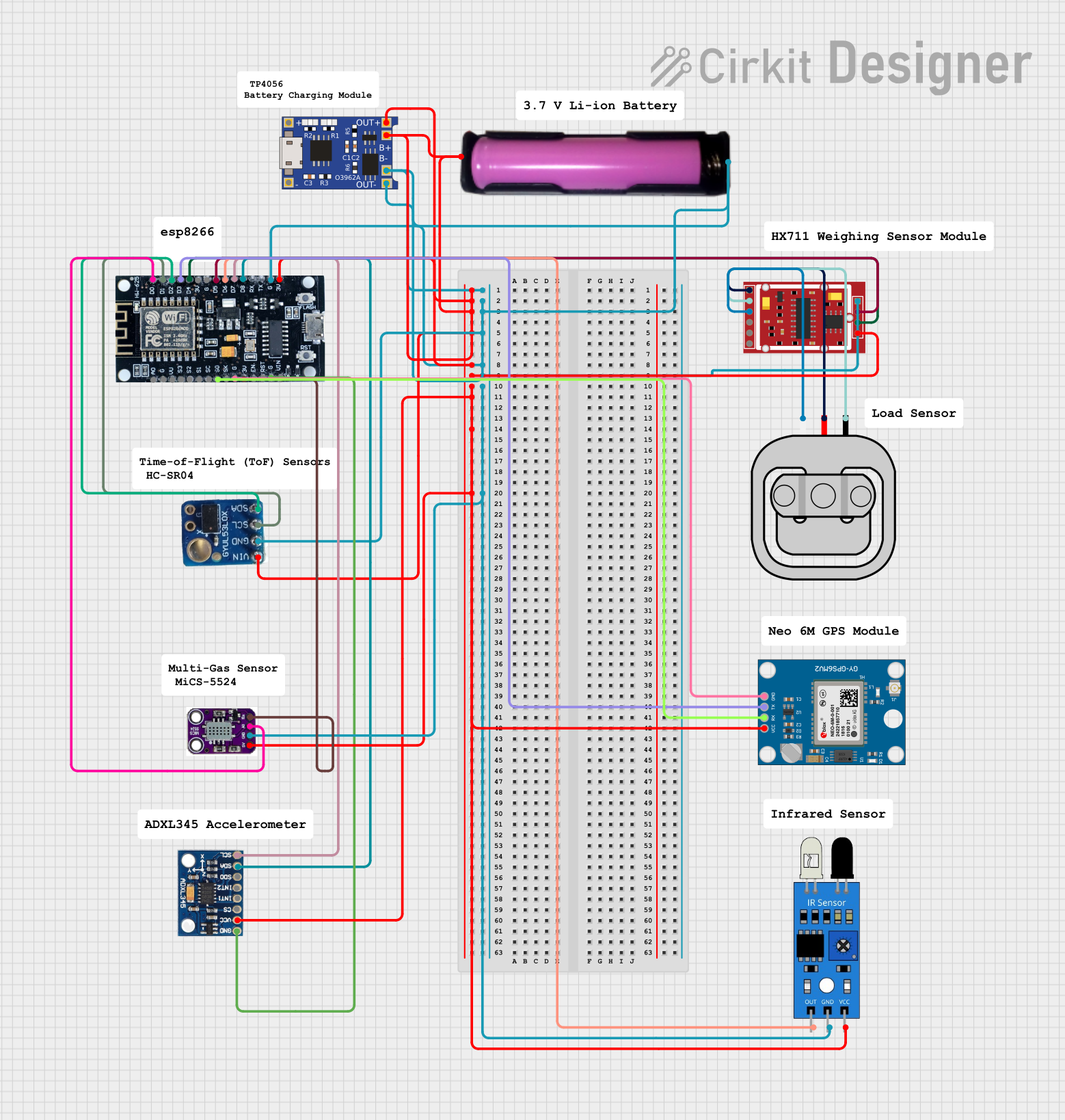
This circuit is a multi-sensor data acquisition system powered by a 18650 battery and managed by an ESP8266 microcontroller. It includes a load sensor interfaced with an HX711 module for weight measurement, an IR sensor, an ADXL345 accelerometer, a VL53L0X distance sensor, and a Neo 6M GPS module for location tracking. The system is designed for wireless data transmission and is supported by a TP4056 module for battery charging.
 Open Project in Cirkit Designer
Open Project in Cirkit DesignerESP32-Controlled Smart Lighting System with Power Monitoring
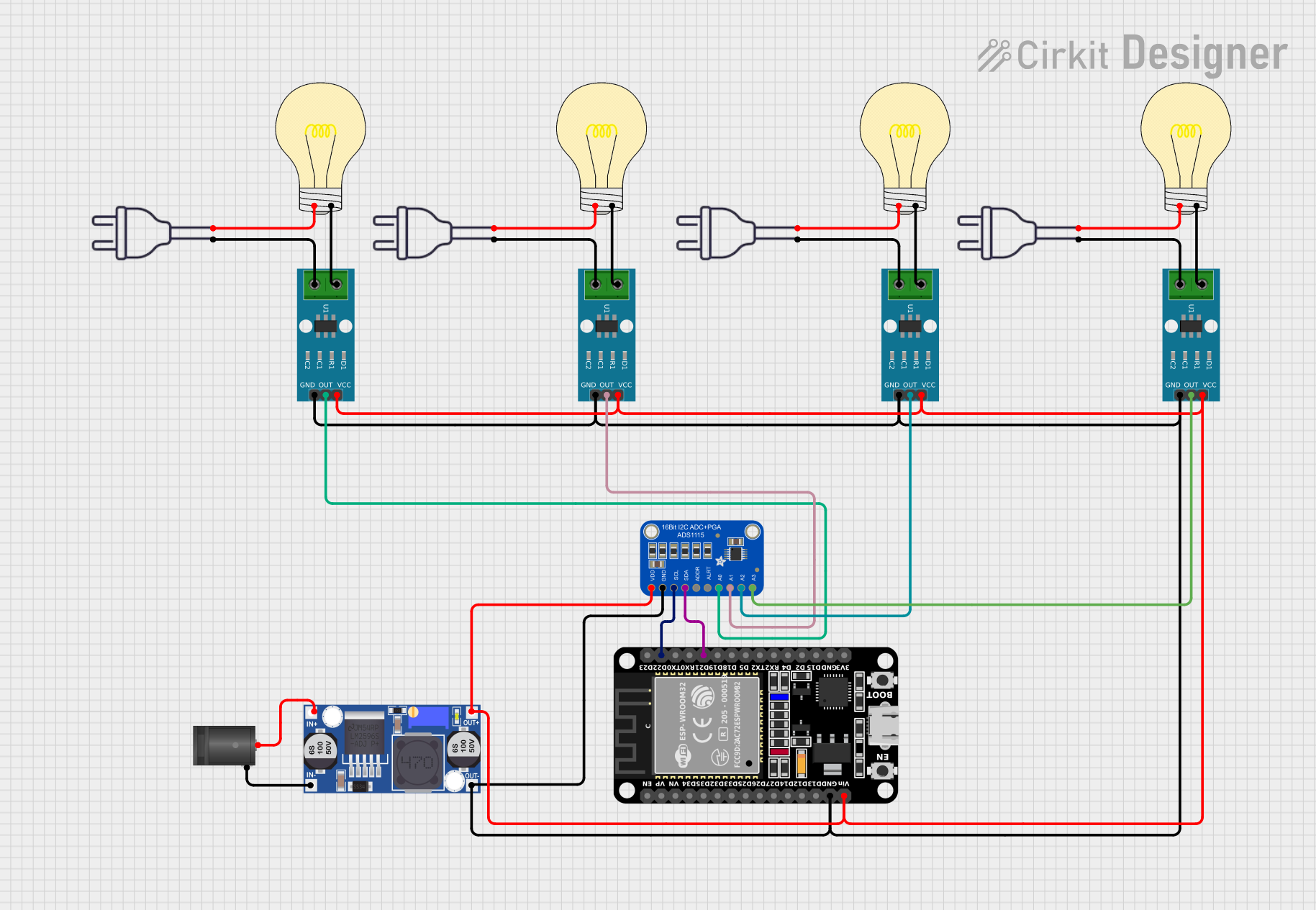
This circuit appears to be a multi-channel current monitoring system using several ACS712 current sensors to measure the current through different loads, likely bulbs connected to a 220V power source. The current readings from the sensors are digitized by an Adafruit ADS1115 16-bit ADC, which interfaces with an ESP32 microcontroller via I2C communication for further processing or telemetry. A buck converter is used to step down the voltage to power the ESP32 and the sensors, and the system is powered through a 2.1mm DC barrel jack, indicating it is designed for external power supply.
 Open Project in Cirkit Designer
Open Project in Cirkit DesignerESP32-Based Current Monitoring and Temperature Sensing System
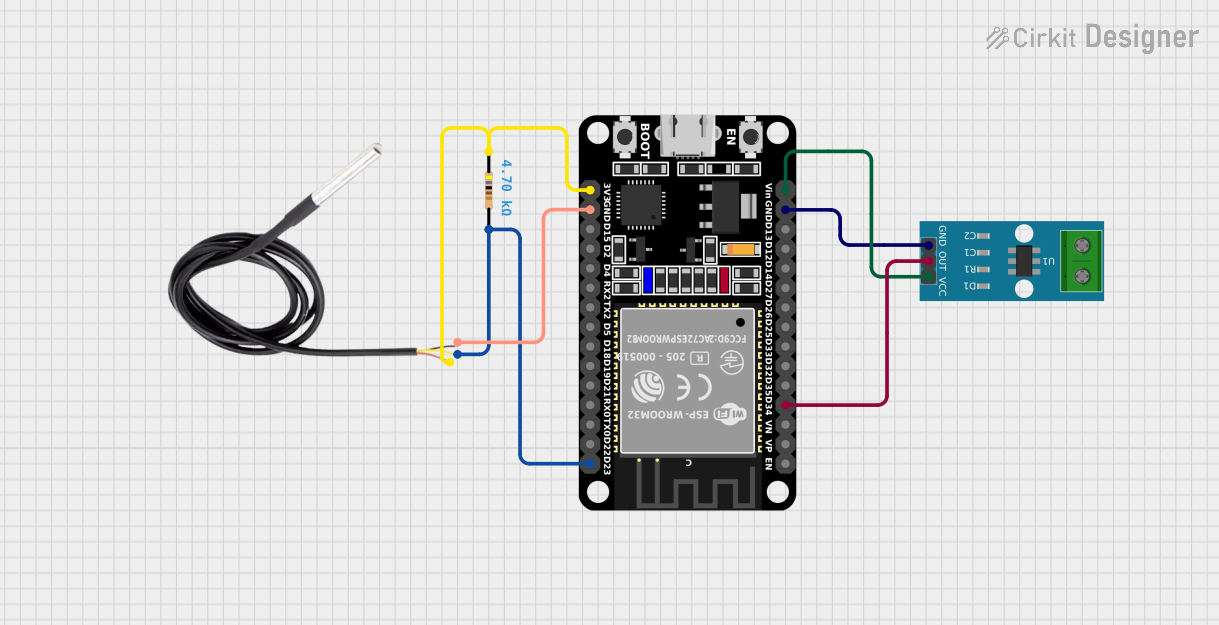
This circuit is designed to measure current using an ACS712 Current Sensor and temperature using a DS18B20 sensor, with an ESP32 microcontroller to process and possibly communicate the sensor data. The ACS712 sensor output is connected to one of the ESP32's analog input pins (D34), while the DS18B20's signal line is interfaced with a digital input pin (D23) through a pull-up resistor (4.7k Ohms). The ESP32 is powered through its Vin pin, and both sensors share a common ground with the ESP32.
 Open Project in Cirkit Designer
Open Project in Cirkit DesignerExplore Projects Built with WCS1700-Hall Effect Base Linear Current Sensor

Wemos S2 Mini Controlled Smart Device with OLED Display, Thermal Printing, and RGB LED Strip
This circuit features a Wemos S2 Mini microcontroller that controls a WS2812 RGB LED strip and communicates with a 0.96" OLED display and a 58mm mini thermal printer. The ACS712 Current Sensor is interfaced with the microcontroller to monitor current, and power is managed by a CD42 BMS connected to two 18650 Li-ion batteries, with a USB-C PD Trigger Board for power delivery. The circuit is designed for visual output (LED strip, OLED display), printing capabilities, and current sensing, likely for a portable, battery-powered monitoring and display device.
 Open Project in Cirkit Designer
Open Project in Cirkit Designer
Smart Weighing System with ESP8266 and HX711 - Battery Powered and Wi-Fi Enabled
This circuit is a multi-sensor data acquisition system powered by a 18650 battery and managed by an ESP8266 microcontroller. It includes a load sensor interfaced with an HX711 module for weight measurement, an IR sensor, an ADXL345 accelerometer, a VL53L0X distance sensor, and a Neo 6M GPS module for location tracking. The system is designed for wireless data transmission and is supported by a TP4056 module for battery charging.
 Open Project in Cirkit Designer
Open Project in Cirkit Designer
ESP32-Controlled Smart Lighting System with Power Monitoring
This circuit appears to be a multi-channel current monitoring system using several ACS712 current sensors to measure the current through different loads, likely bulbs connected to a 220V power source. The current readings from the sensors are digitized by an Adafruit ADS1115 16-bit ADC, which interfaces with an ESP32 microcontroller via I2C communication for further processing or telemetry. A buck converter is used to step down the voltage to power the ESP32 and the sensors, and the system is powered through a 2.1mm DC barrel jack, indicating it is designed for external power supply.
 Open Project in Cirkit Designer
Open Project in Cirkit Designer
ESP32-Based Current Monitoring and Temperature Sensing System
This circuit is designed to measure current using an ACS712 Current Sensor and temperature using a DS18B20 sensor, with an ESP32 microcontroller to process and possibly communicate the sensor data. The ACS712 sensor output is connected to one of the ESP32's analog input pins (D34), while the DS18B20's signal line is interfaced with a digital input pin (D23) through a pull-up resistor (4.7k Ohms). The ESP32 is powered through its Vin pin, and both sensors share a common ground with the ESP32.
 Open Project in Cirkit Designer
Open Project in Cirkit DesignerTechnical Specifications
Key Technical Details
| Parameter | Value |
|---|---|
| Supply Voltage (Vcc) | 5V |
| Output Voltage Range | 0.2V to 4.8V |
| Sensitivity | 1V/A |
| Measurement Range | ±20A |
| Response Time | 3µs |
| Operating Temperature | -40°C to +85°C |
| Package Type | SIP-3 |
Pin Configuration and Descriptions
| Pin Number | Pin Name | Description |
|---|---|---|
| 1 | Vcc | Power supply (5V) |
| 2 | Vout | Output voltage proportional to the measured current |
| 3 | GND | Ground |
Usage Instructions
How to Use the Component in a Circuit
- Power Supply: Connect the Vcc pin to a 5V power supply and the GND pin to the ground of your circuit.
- Current Path: Pass the conductor whose current you want to measure through the sensor's aperture.
- Output Signal: Connect the Vout pin to an analog input of a microcontroller (e.g., Arduino) to read the output voltage.
Important Considerations and Best Practices
- Calibration: Ensure proper calibration of the sensor to achieve accurate measurements.
- Filtering: Use a capacitor (e.g., 0.1µF) between Vcc and GND to filter out noise.
- Temperature Effects: Be aware of temperature variations that might affect the sensor's accuracy.
- Current Range: Ensure the current through the conductor does not exceed the sensor's maximum rating of ±20A.
Example Code for Arduino UNO
Below is an example code to interface the WCS1700 with an Arduino UNO to measure current:
// Define the analog pin connected to the sensor's Vout pin
const int sensorPin = A0;
// Define the sensitivity of the sensor (1V/A)
const float sensitivity = 1.0;
// Define the offset voltage (2.5V for 0A current)
const float offsetVoltage = 2.5;
void setup() {
// Initialize the serial communication
Serial.begin(9600);
}
void loop() {
// Read the analog value from the sensor
int sensorValue = analogRead(sensorPin);
// Convert the analog value to voltage
float voltage = sensorValue * (5.0 / 1023.0);
// Calculate the current in Amperes
float current = (voltage - offsetVoltage) / sensitivity;
// Print the current value to the serial monitor
Serial.print("Current: ");
Serial.print(current);
Serial.println(" A");
// Wait for 1 second before the next reading
delay(1000);
}
Troubleshooting and FAQs
Common Issues Users Might Face
- Inaccurate Readings:
- Solution: Ensure proper calibration and check for any noise in the power supply.
- No Output Signal:
- Solution: Verify the connections and ensure the sensor is powered correctly.
- Fluctuating Readings:
- Solution: Add a capacitor between Vcc and GND to filter out noise.
Solutions and Tips for Troubleshooting
- Check Connections: Ensure all connections are secure and correct.
- Power Supply: Use a stable 5V power supply to avoid fluctuations in readings.
- Calibration: Perform a calibration procedure to account for any offsets or variations in the sensor.
By following this documentation, users can effectively integrate the WCS1700 Hall Effect-based linear current sensor into their projects, ensuring accurate and reliable current measurements.